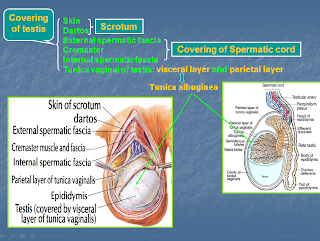Larynx
Larynx is the voice box & it also serves as an air passage
Extends from root of the tongue at the inlet of the larynx to the commencement of trachea at the level of 6th cervical vertebra
The cavity of the larynx is continuous below with the trachea, and above opens into the laryngopharynx.


SKELETON OF THE LARYNX
The skeletal framework of the larynx is formed
by a series of cartilages interconnected by
ligaments and fibrous membranes.
Cartilages of Larynx
The cartilages of the larynx are nine in number, three single and three paired.
Three single are thyroid, cricoid and epiglottis.
Three paired are arytenoid ,corniculate and cuneiform .
Thyroid cartilage
It is the Largest cartilage
Made of 2 quadrangular plates
Each plate has 2 surfaces :Inner &outer
4 Borders : Upper,Lower,anterior,posterior
Anterior border
Anterior borders unites at an angle : Laryngeal prominence (Adams apple)
separated by Thyroid notch
Posterior border
Posterior borders : Prolonged upwards & downwards called Sup. &Inf. horns
Superior horn: Lateral thyrohyoid ligament
Inferior horn: Facet at the medial surface for cricoid arch

Cricoid cartilage
Signet ring shaped
Having posterior quadrilateral lamina & an anterior narrow arch
Cricoid Lamina:
Posterior surface:
Median ridge to which the tendinous bands from Longitudnal muscles of oesophagous are attached
Each side:
2 depressions for attatchment of posterior crico-arytenoid muscle
Upper border - 2 facets for articulation with the base of arytenoids

Cricoid arch
Rough external surface having circular facet on each side for articulation with the inferior horn of the thyroid cartilage
Lower border of cartilage:Attachment to Cricotracheal membrane
Epiglottis
Oblong leaf shaped
2ends, upper & Lower
2 surfaces, Anterior &Posterior
2Lateral borders
The lower end attachs to inner surface of thyroid cartilage below thyroid notch by the thyroepiglottic ligament

Arytenoid cartilage
These are placed on the upper border of the lamina of the cricoid
Pyramidal in shape
It has an apex ,base, 3 surfaces-Medial , Lateral & anterolateral
Base-a facet which articulates with the upper border of the cricoid lamina
Apex articulates with corniculate cartilage

Medial surfaces faces each other
Anterolateralsurface-------------- 2 depressions,seperated by a ridge , for muscle (vocalis) &
Ligament(vestibular ligament)
Lateral angle of the base projects laterally as muscular process
Anterior angle of the base projects forwards as the vocal processto which the vocal ligament is attached.

Ligaments of larynx
Extrinsic ligaments
These ligaments lie external to the larynx and connect the larynx with the hyoid bone and trachea.
Thyrohyoid membrane
It spans between the superior margin of the thyroid cartilage below and the hyoid bone above.
Its poserior borders thickened to form the lateral thyroid ligaments.
It thickens anteriorly in the the midline to form the median thyrohyoid ligament.
Hyo-epiglottic ligament
The hyo-epiglottic ligament extends from the midline of the epiglottis to the body of the hyoid bone.
It connects the epiglottis with the hyoid bone.
Cricotracheal ligament
The cricotracheal ligament runs from the lower border of the cricoid cartilage to the upper border of the first tracheal cartilage.
The larynx is attached to the trachea by this ligament.

Intrinsic ligaments
They lie within the cartilaginous skeleton of the larynx and connect the thyroid, cricoid and arytenoid cartilages .
Quadrangular membrane
It passes between lateral margin of the epiglottis and the arytenoid cartilage on the same side.
The upper border slopes posteriorly to form the aryepiglottic ligament which constitute the central component of aryepiglottic fold
The lower border forms the the vestibular fold (false vocal cord).

Cricovocal membrane
It is attached to the arch of cricoid cartilage and extends superiorly to end in a free upper margin.
The free upper margin attaches anteriorly to the thyroid cartilage and posteriorly to the vocal processes of the arytenoid cartilages
The upper free margin is thickened to form the vocal ligament, which is under the vocal fold (true 'vocal cord') of the larynx.
The cricothyroid ligament is also thickened anteriorly in the midline to form the median cricothyroid ligament.
Laryngeal joints
Cricothyroid joint
This joint happens between the inferior horns of the thyroid cartilage and lateral surface of the lamina of cricoid cartilage.
It is a synovial joint.
The cricothyroid joints enable the thyroid cartilage to move forward and tilt downwards on the cricoid cartilage and effectively lengthens and puts tension on the vocal ligaments.

Crico-arytenoid joints
It is between the articular facets on the superolateral surfaces of the cricoid cartilage and the bases of the arytenoid cartilages.
It is a synovial joint.
It enables the arytenoid cartilages to slide away or towards each other and to rotate.
These movements abduct and adduct the vocal ligaments .

Cavity of the larynx
The laryngeal cavity extends from the laryngeal inlet down to the lower border of the cricoid cartilage, where it continues into the trachea.
It is divided into three parts by the vestibular and vocal folds :the Vestibule, Sinus and Infraglottic space

Vestible
It is the part situated between the laryngeal inlet and the vestibular fold.
Sinus
Sinus is the middle part between the vestibular folds above and the vocal folds below.
Infraglottic space
The infraglottic space is the most inferior chamber of the laryngeal cavity and is between the vocal folds and the inferior opening of the larynx.











Named parts of parietal pleura
The names given to the parietal pleura correspond to the parts of the wall with which they are associated
pleura related to the ribs and intercostal spaces is termed the costal part;
pleura covering the diaphragm is the diaphragmatic part;
pleura covering the mediastinum is the mediastinal part;
the dome-shaped layer of parietal pleura lining the cervical extension of the pleural cavity is dome of pleura


Pleuracentesis
through the 7th or 8th intercostal space,on the posterior axillary line, along the superior border of the lower rib
































































